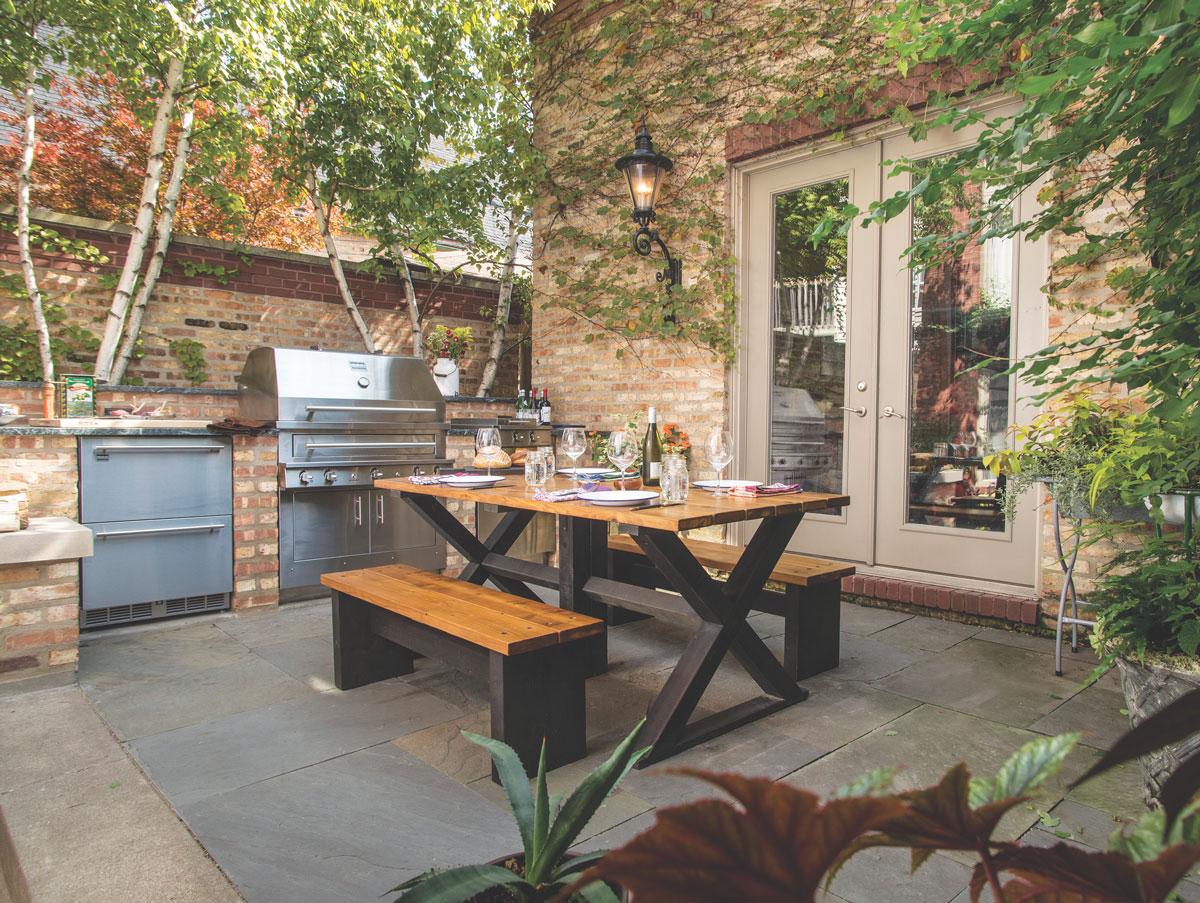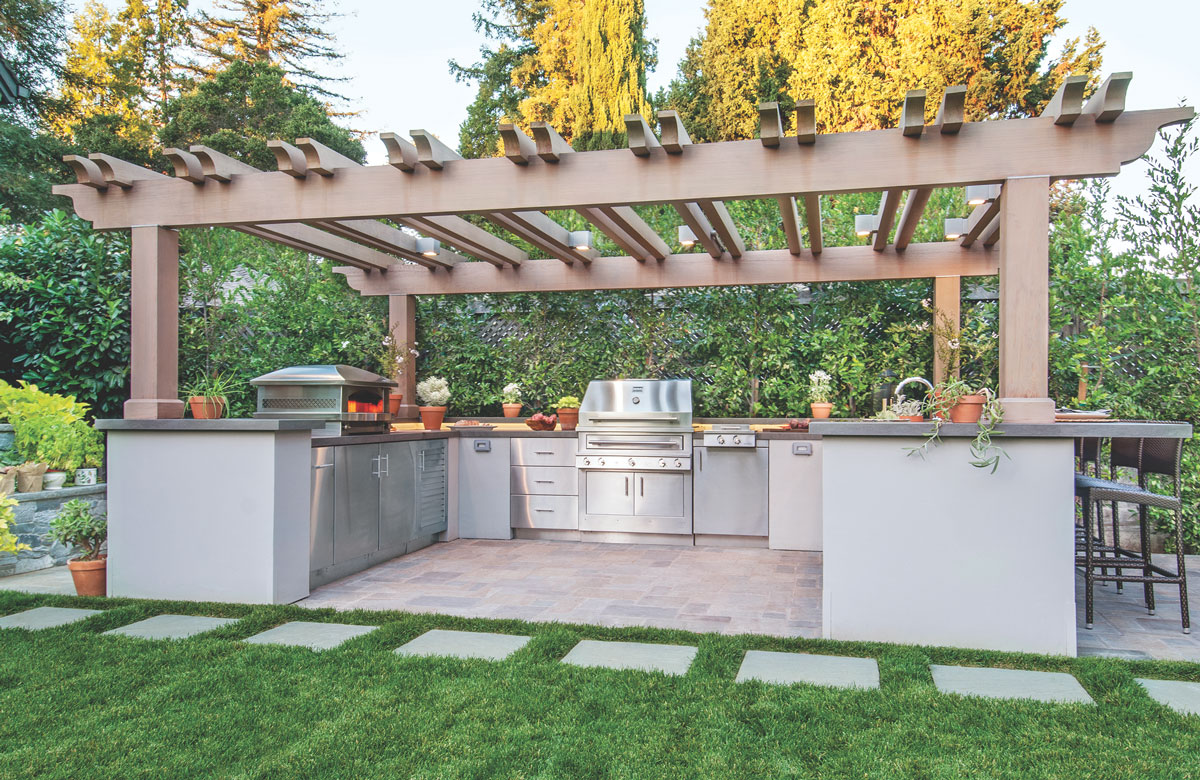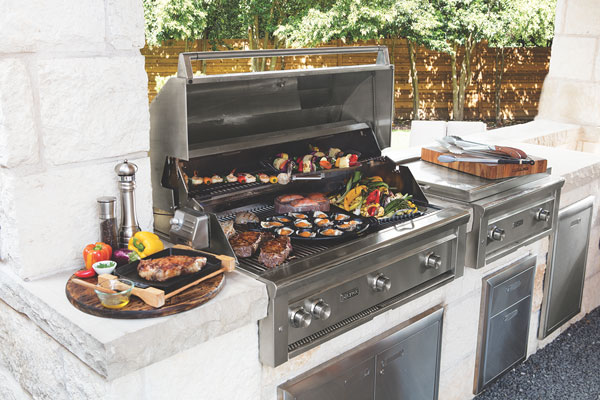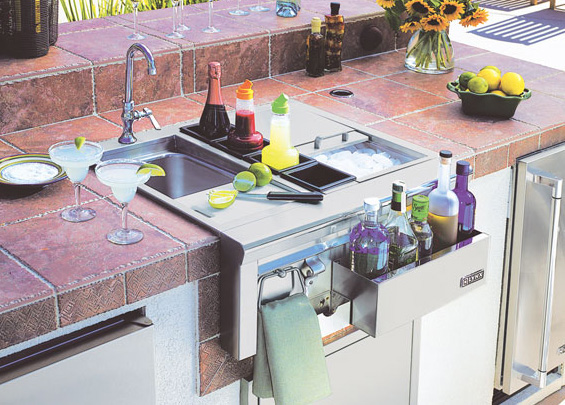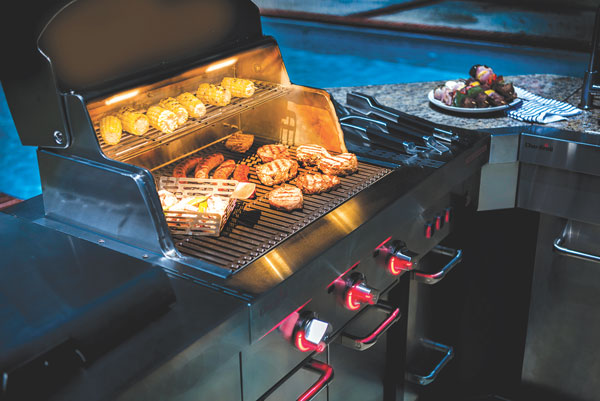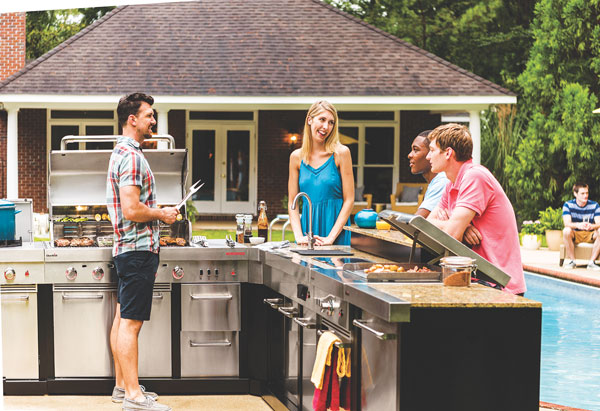The Grills of Summer
Writer Marirose KrallCreate a gourmet kitchen right in your own backyard.
Nothing says “summertime” like firing up the backyard grill. It’s part of our collective American experience. Nowadays, though, grilling involves so much more than hot dogs and hamburgers on a holiday weekend. “Barbecuing is no longer just a pastime, but an integral part of the North American lifestyle,” says Jack Goldman, president and CEO of the Hearth, Patio & Barbecue Association (hpba.org).
Russ Faulk, chief designer and head of product for Kalamazoo Outdoor Gourmet in Chicago, explains the appeal of dining al fresco. “Cooking outdoors creates a sense of occasion or celebration around every meal,” he says. “The outdoor kitchen is a perfect place to gather with family and friends. Of course, I strongly believe that food cooked outdoors just tastes better too.” He’s not alone. A 2017 HPBA survey found that the flavor of barbecued food is the top reason why people own grills.
The range of food cooked outdoors has widened considerably, and that has spurred changes in the industry. We’re just as likely to be grilling vegetables as we are to be barbecuing ribs these days, and we’re looking for new and better ways to prepare those dishes. Faulk notes, “the most prevalent trend in outdoor kitchen design is toward more sophisticated and more capable spaces. It wasn’t too long ago that most outdoor kitchens looked the same: a bit of masonry, a drop-in grill and some access doors. That is certainly no longer the case. The design language is much more varied, and the outdoor kitchen can do everything the indoor kitchen can do—and more.”
Scott Grugel, president of Middleby Residential Sales, the parent company for Los Angeles-based Lynx Grills, agrees. He says consumers have become more discerning in what and how they cook outdoors.
“If you go back a number of years, it was just a grill. Today, there are so many accessories and so many different types of cooking.”
Those accessories include multilayered grilling surfaces, rotisseries, refrigerator drawers, ice buckets, weather-tight cabinetry and wine refrigerators, to name just a few. For example, pizza ovens, all the rage several years ago and still popular today, now have the capability to cook just about every type of food.
If an outdoor kitchen can incorporate all the elements found indoors, it needs to be planned just as carefully, with thought given to appliance requirements and space considerations. Modular products work well, says Clark Turner, director of product management for gas grills at Columbus, GA-based Char-Broil, because they’re designed to “allow consumers to select modules to fit unique spaces and cooking and entertaining needs. They offer numerous configuration options” and can be arranged to suit any space. In addition, they feature “leveling casters and adjustable legs which allow for stability on uneven ground.”
While component options are many, Faulk points out a particular element he believes to be a necessity. “If I had to pick one design principle as the most important thing to know when creating an outdoor kitchen, it would be countertop landing area. The outdoor kitchen almost always has less counter space than its indoor counterpart, so it is critical to plan this part of the design very well. More space is obviously better, but ensuring that each workstation has an appropriate landing area will go a long way.”
High-tech innovations also go a long way toward creating a pleasant outdoor cooking experience. With grilling, as with everything else, “there’s an app for that.” Much like the latest indoor kitchen technology, many outdoor kitchen appliances feature computer systems to help make prepping and cooking more efficient. They store recipes and grocery lists, measure heat output and monitor cook times to help ensure synchronized serving.
“You can cook a different entrée on every burner and have them come off at the same time,” Grugel notes. That can certainly make a host’s life easier. “Otherwise,” he adds, “you’re stuck with the appliance until the meal is cooked. This way, you can let it go and it comes out perfectly every time.”
And that, of course, is the endgame—the ability to plan, prep and cook a meal outdoors quickly, easily and without stress. That’s what makes a successful gathering. Simplifying the logistics of getting a meal on the (outdoor) table makes for an idyllic get-together. Grugel says, “People love to be together. It’s a social experience. The things they can do indoors they also like to do outdoors, especially when the weather is conducive to it. Being under the stars, being out in the fresh air—there aren’t many better places to be than outdoors in the nice weather.”

